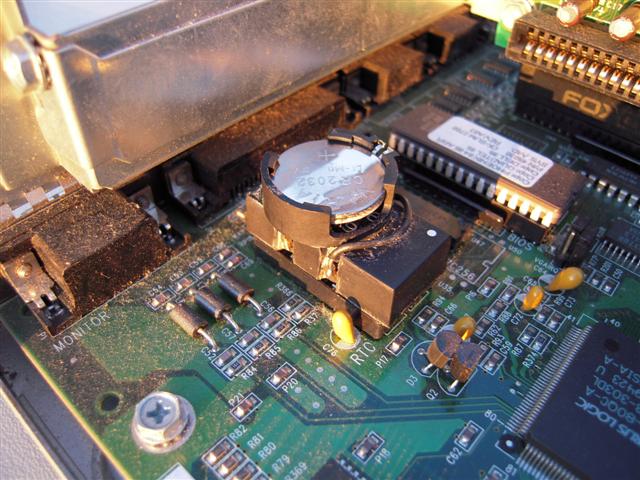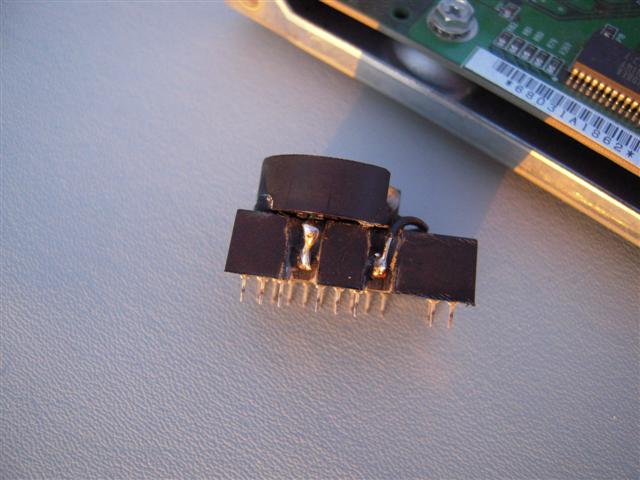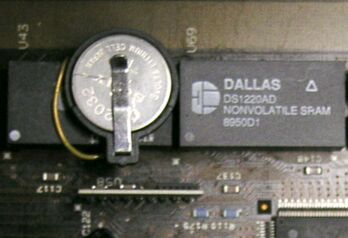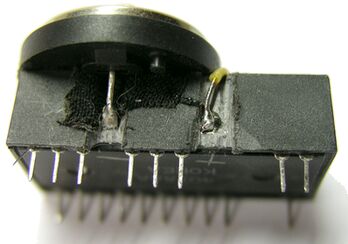|
Some more Feedback !
|
|
On March, 23rd, 2007 Chris (xrisl [at]
yahoo.com)
reported the following:
My old computer has been out of action for months, but this week I got
it going again by following the instructions on your webpage "Reworking
the DS1287 RTC chip".
Without that webpage, I would never have thought of repairing it like
that!
So you have my thanks and gratitude for putting that idea on the web.
(Incidentally, my computer is an Compaq 386N, which seems to date from
about 1990).
With thanks,
Chris.
|
|
On April 24th, 2007 Gary Jay in Ohio, USA
(siffert [at]
usa.net) reported the following:
Hi Peter...just thought I would let you know that
I got the DS1287 reworking on my first try!
I used an iron file that was about the exact width I needed and just
slowly went back and forth about 50 times until I saw the metal and
then used sandpaper the rest of the way.
Soldered and used a CR2032 battery with holder on top of the 1287.
Worked like a charm and would like to thank you and I am very grateful
I stumbled on your web site. I could not have gotten my Compaq DeskPro
286e back to clock life back without you! Regards, Gary
|
|
William Walsh, USA finally succeeded in
the DS1287 rework
His success-story can be read at his Dallas
Rework Page
|
William Walsh, USA also modified the
DS1387 chip
The DS1387 is technically near-identical to the DS1287, but has an
additional integrated 4K SRAM. William Walsh did the DS-Rework to
get an external battery to it as well. His report can be found at his DS1387 Rework Page
Really good job, William !
|
On January, 7th, 2009 Emmanuel Da Piedade
(emmanuel.dapiedade [at]
gmail [dot] com) from France wrote me:
Hi Peter,
My name's Emmanuel, and I live near Paris in France.
I just want to tell you that I succesfully used your DS1287 rework
How-to.
You did a great job! Thank you! My IBM PS/1 m2011 works fine now!
You can see the result here (sorry, the text is in french) :
Here
Best Regards
Emmanuel
|
D. Howe, USA did the modification for his
Dell 4100 computer
He reported on February 16, 2009:
Dear Peter...
I bought an old DELL 4100 computer about 7 years ago to play with
because it had an 80486DX4 chip in it.
Then circumstances
kept me from working with it until now...the computer spending all
this time in my garage. A couple weeks ago when I finally got
around to hooking it up...I discovered that the RTC chip was dead.
Can you imagine my amazement and relief when I discovered your
web site describing the DS1287 rework process.
I used a medium sized flat file...a little less thick than the distance
between two
pins...to file down to the two battery pins. I soldered a #22 solid
wire to
each of the battery holder pins, then glued the holder to the DS1287
case using model airplane plastic cement. Attached the two wires
to the exposed pins and put the new lithium cell in the holder. Voila!
It works like a champ!
For anyone who attempts this mod...don't make my mistake with the
plastic glue. It sets too fast!...less than 15 seconds.
Go with the hot glue.
So...Peter...Thank you very much for putting this mod on your web site.
I appreciate it greatly.
With regards, D. Howe
dougnflo [at] comcast [dot] net
Kalamazoo, Michigan, U.S.A.


Above 2 pictures © 2009 by D. Howe /
USA
|







